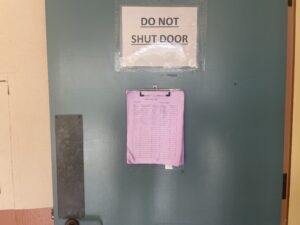If you have attended school at all this year, you will have noticed a severe change in the schedule, as well as all the problems that came with it.
The first big problem is the length of classes in the new block schedule, which consists of four 80 minute periods per semester, causing many students to have a big time gap between years of academic classes. For instance, one student says, “My last math class was in fall of 2020. In January of 2022, I’ll be taking my next math class. I don’t think I’ll be able to remember anything. It’ll be hard to catch up and I’m scared of falling behind.” The short time over summer break is jarring when we return to school, so how are students expected to remember unused skills for a whole school year?
Additionally, lots of AP students are concerned about taking a densely packed course in the fall and having to take the AP test in the spring. This puts extreme pressure on students to cram for their AP tests. One student expressed his opinion on having double the amount of AP work due to test review sessions.“Last year, I had AP US History and AP Environmental Science. US History is extremely content heavy, and I basically had to relearn the entire curriculum in a semester where I had even more AP classes.”
The lunch schedule has been heavily debated as well, but the debate of whether or not having ten more minutes of lunch is worth ten more minutes of school really boils down to that our school day is disproportionate to our break time, and nobody is excited that the school day is now even longer.
While in the process of getting information on the new schedule, one teacher told me that a major reason for the four-period block schedule is so kids who fail a class at the beginning of the year can have a chance to retake the class in the spring. When I went to Santa Barbara Junior High I had a similar experience when the 4-point grading scale was implemented in a few of my classes. It shifted the grading scale to make it easier to pass classes with lower grades. (4 points is an A, 3 points is a B, etc.) What both of these systems have in common is that they value the number of students passing classes over whether or not kids are genuinely taught and encouraged in school. When the school makes it okay to pass with a lower grade, they’re actually missing out on the chance to help a student learn and get the support they deserve. Our school should value making sure our students are learning by checking in and adjusting unfair curriculum instead of lowering the standards of our education. With more care and support from our district, we wouldn’t need to keep changing our schedule.
Overall, The four-block schedule’s effect is overwhelmingly negative. Our school day should not be draining and seemingly endless. Students need a diverse school day, more similar to our six-period schedule, where they have an appropriate amount of time to focus on each class, and where all educational minutes are used to learn, instead of counting the minutes passed.
[Image Credits: Kelly Meeder]





Be First to Comment